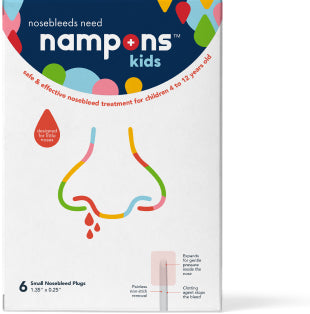How common are nosebleeds, are they serious, and who gets them the most? In this guide, we’ll look at some interesting stats about nosebleeds, answering all of these questions and more.
Stat 1: Over 60% of People Will Have at Least 1 Nosebleed
A few websites claim that just 1 in 7 people will have a nosebleed during their lifetime. This quote seems to come from a WebMD article, but while WebMD still lists that quote on one of its Google search pages (taken as a snippet from another page) the original mention has been removed.
Furthermore, if you dig a little deeper, you’ll find that the real statistic is closer to 60%, and even that might be an underestimation.
After all, to arrive at an accurate figure, you would need to survey millions of people over the age of 80 and hope that they remember all of their childhoods and whether or not they had a nosebleed.
The simple takeaway is that nosebleeds are incredibly common and while only a small percentage get them regularly, most people will have at least one.
Stat 2: Kids and Seniors Have Nosebleeds More Frequently
You are more likely to have a nosebleed after the age of 60 or under the age of 10. These two age groups hit most of the highest risk markers, from nose picking to poorly manicured nails, and trauma.
Kids are more likely to fall flat on their faces. They also tend to pick their noses quite aggressively and don’t think twice about stuffing crayons and other detritus up there. As for seniors, they are more prone to dehydration and spend more time indoors with the heating on. They also have brittle nails that are hard to manicure and can wound the delicate nasal passages when picking.
All of these factors increase the risk of nosebleeds and make people in these age groups prime candidates for nosebleeds.
Stat 3: Most Nosebleeds are Harmless
Nosebleeds are one of those rare medical symptoms that seem scary and ominous, but rarely indicate anything serious. The vast majority of nosebleeds, even if they occur persistently, are completely harmless and not indicative of a more serious issue.
In fact, most nosebleeds are the result of nose picking, dryness, and temperature changes and are self-limiting. In other words, if you stop picking your nose or increase the humidity in your home, your nosebleeds will stop.
According to a study on nosebleeds, just 10% require medical intervention. Depending on where you stand, that may sound very high or very low. If you’re in the first category, it’s worth noting that “medical intervention” usually just means that the person sought medical care and doesn’t necessarily mean that they had a serious issue.
It includes the frightened parents and caregivers who don’t know how to act and the people taking blood-thinning medications who had a nosebleed for longer than 15 minutes.
Stat 4: Nosebleeds Can be Fatal
As harmless as the majority of nosebleeds are, there are times when they can be serious and even fatal. If you have a tumor in your sinuses, this may rupture and lead to significant blood loss. The same is true for anyone taking blood-thinning medications and for people who have a blood clotting disorder.
This is why it’s important to seek medical help if the bleed continues for more than 15 minutes. You can also keep some Nampons on hand to help you if you are experiencing heavy nosebleeds on a regular basis. They create a plug in your nose and use a safe blood clotting agent to stop the bleeding.
Nosebleeds can also occur as a symptom of a much more serious condition. For instance, a boxer may leave the ring with a heavy nosebleed but could also be suffering from severe brain trauma. A nosebleed can also present as a symptom of cancer. However, in such instances, it is rarely the only symptom.



